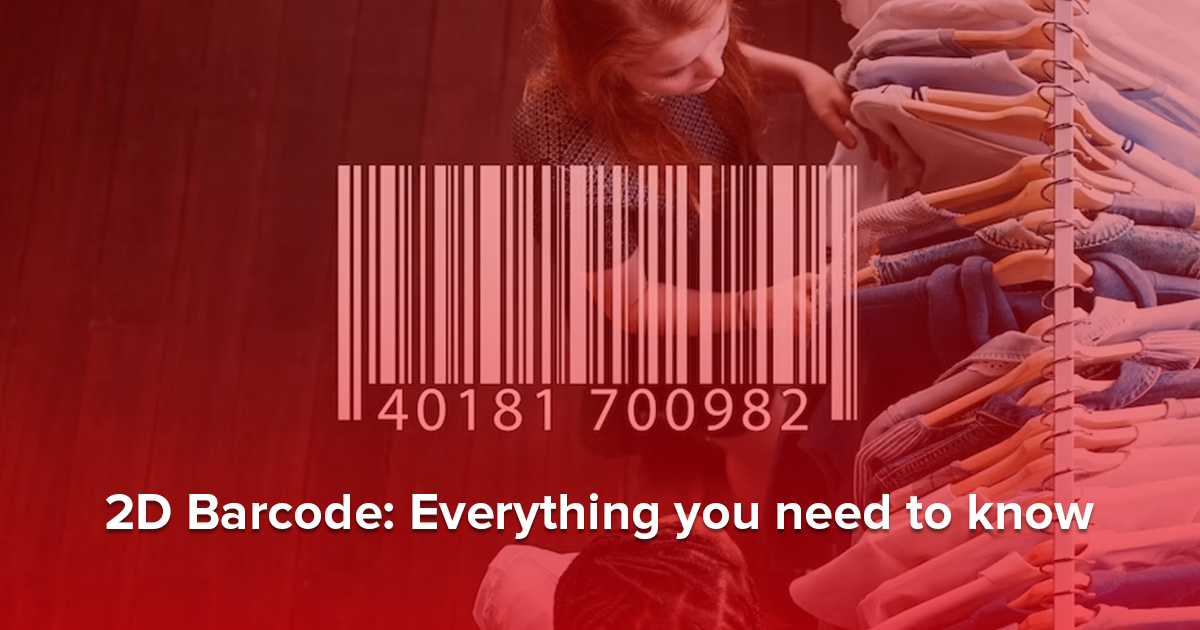2d barcode reader online
A 2D barcode, also known as a matrix barcode or a two-dimensional code, is a type of machine-readable code that contains information in two dimensions. The 2D barcode QR code can store more data than traditional barcodes and is widely used in retail, transportation, healthcare, and logistics for tracking and identification purposes. The barcodes are often used to encode product information, serial numbers, and other data that can be used to identify an item or track its location. This technology allows businesses to quickly access important information without scanning items or searching databases manually.
How Does It Work?
The way a 2D barcode works by using a specific pattern of squares or dots to represent different characters or data. The 2D barcode reader online can scan the 2D barcode QR code and convert it into readable information. The more squares or dots in the pattern, the more data the barcode can store.
The Types Of 2D Barcodes
QR Code (Quick Response Code):
The 2D barcode QR code was developed by the Japanese company Denso Wave in 1994. The QR code can store important data, including text, URLs, and contact information, and can be scanned using a 2D barcode reader online smartphone camera. Their simplicity and versatility characterize them.
Data Matrix:
International Data Matrix, Inc., in the 1990s, developed Data Matrix codes. They are high-density 2D barcode QR codes that can store lots of data in a small space, commonly used in manufacturing, to track and identify products. They comprise square and rectangular symbols and patterns.
MaxiCode:
MaxiCode was developed by United Parcel Service (UPS) in the 1990s. It is a unique 2D barcode that can store shipping information, destination codes, and tracking numbers. It is commonly used in the shipping and logistics industry to track packages and shipments.
Aztec Code:
Andrew Longacre, Jr. developed Aztec Code in 1995. It is a high-density 2D barcode that can store much data, including text, URLs, and contact information. It is commonly used in the transportation industry to encode data on train and airline tickets.
PDF417
The PDF417 is a stacked linear barcode said to be developed by Symbol Technologies in 1991.
The barcodes in PDF417 each consist of three to 90 rows, each equivalent to a small 1D barcode. It specifies that each pattern in the code consists of four bars and spaces, and each pattern is to be 17 units long.
GS1: Composite Code:
The GS1 Composite symbology integrates a GS1 system linear symbol and a 2D Composite Component as a single symbology. The 2D Composite Component is printed above the linear component. A separator pattern separates the two components.
How Secure Are They?
2D barcode scanners and printers have become an increasingly popular method for storing and sharing data as they are secure, reliable, small, and easy to scan. The barcodes help businesses quickly and securely share data without the risk of data theft or manipulation.
The security of 2D barcodes relies on their ability to encode large amounts of data in minimal space, making it difficult for hackers to decode. They are also encrypted with algorithms that make them even more secure. Their requirement for specialized scanners to access data restricts unauthorized access.
What Is A Barcode Reader?
A 2D barcode reader online is an essential tool for businesses that need to quickly and accurately scan barcodes. It can be used in various applications such as inventory tracking, product authentication, and customer loyalty programs. It is also used in retail stores to speed up checkout times and reduce errors. This scanner can read linear and matrix codes, making it highly versatile and reliable. It helps businesses operate smoothly and efficiently and can store customer data for loyalty programs or marketing campaigns.
The Types Of 2d Barcode Scanners
There are several types of 2D barcode scanners and barcode sticker machine that vary in size, shape, and features. However, two of the most widely used scanners are:-
Handy 2D Barcode Scanner
Handheld 2D barcode reader online is becoming increasingly popular for businesses requiring to scan codes quickly and accurately. These scanners feature a CMOS array sensor with 640 (H) x 480 (V) pixels, a 30 – 170 mm (15 mil QR code) scanning range, and a 100 fps scan rate with 3 mil resolution for high-speed accuracy. This makes them perfect for fast-paced environments where precision is essential.
These handy 2D barcode reader online are ideal for retail, healthcare, logistics, and other industries where fast data collection is essential. They are also used in industrial automation applications such as manufacturing and warehouse management.
Compact 2D Barcode Scanner
Compact 2D barcode reader online is becoming increasingly popular in the workplace due to their ability to quickly and accurately scan barcodes. The technology behind these scanners consists of two white light LEDs, 640 (H) x 480 (V) pixels, and a depth of field that can read up to a 15 mil QR code. In addition, they offer horizontal and vertical angular views of 38° and 28.9°, respectively, with a maximum frame rate of 100 fps. The compact 2d barcode scanners provide reliable scanning results for various applications such as inventory management or retail sales tracking.
Conclusion
2D barcode QR code have become an increasingly reliable and effective method for storing and transferring digital and physical data. With their ability to store more data than traditional 1D barcodes, 2D barcodes are used in various applications, from tracking to ticketing and payment systems, and even as a barcode sticker machine. They are also used across industries like healthcare, retail, etc. As the technology evolves, we will likely see even more uses for 2D
barcodes.
There are numerous companies providing barcode scanners globally, but the 2D barcode scanners by Posiflex are the most cost-effective and reliable. Their ability to read various barcodes streamlines operations and reduces costs. In addition, they are easy to use and require minimal setup or maintenance, making them ideal for any business environment.



